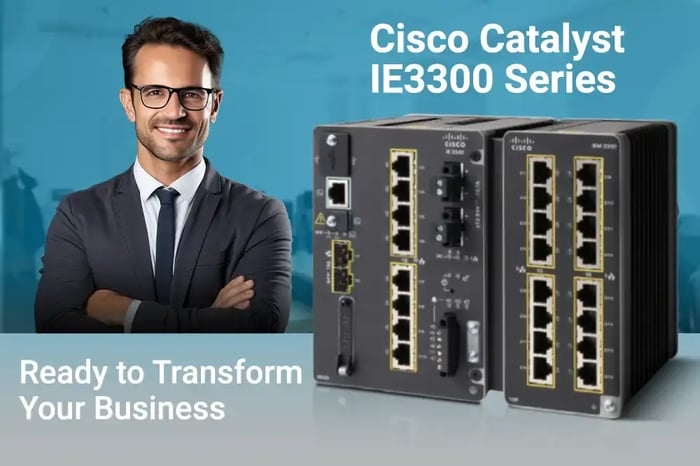You have no items in your shopping cart.

Intrusion Prevention Systems vs. Firewalls
This article dives deep into the differences between Intrusion Prevention Systems and Firewalls.
An Intrusion Prevention System (IPS) is one of network security's most crucial requirements today. Among the various network technologies, network security is one of the most rapidly growing ones. We can observe this growth through the different types of network security defense methodologies and their related devices. So, in this IPS firewall comparison, we will go over the basics and then analyze a strong product choice for network security.
Scroll down if you want to read directly about our pick!
What is an Intrusion Prevention System IPS?
There are a lot of different definitions for Intrusion Prevention System IPS technology. Among those different definitions, we like the one provided by PaloAlto Networks, which defines the Intrusion Prevention System IPS as:
Intrusion Prevention System IPS is a network security/threat prevention technology that examines network traffic flows to detect and prevent vulnerability exploits. Vulnerability exploits usually come in the form of malicious inputs to a target application or service that attackers use to interrupt and gain control of an application or machine. Following a successful exploit, the attacker can disable the target application (resulting in a denial-of-service state) or potentially access all the rights and permissions available to the compromised application.

Prevention System IPS Deployment
As threats continue to evolve in speed and sophistication, network security departments need effective and comprehensive security systems that meet their networks' security and performance requirements.
For us as workers in the network security field, that immediately rings the bell of one technology - the Firewalls. This technology is considered the primary building block of the security wall required. We have discussed the various features of NGFWs in a previous post (CLICK HERE to read "Evolution and Emergence of Next-Generation Firewalls)
However, Intrusion Prevention Systems do have a different flavor than Firewalls. We will contrast the differences in this blog post.
How Does an Intrusion Prevention System Differ from a Firewall?
Firewalls (both traditional and NGFW) are considered the first line of defense against different malicious attacks, doing the filtering based on various attributes of the traffic. Those attributes can be limited to information contained in Layers 3 and 4 of the IP header. They can be extended up to the information found at layer 7.
Depending on the generation of the firewall, it can even inspect the payload. But once the packet passes the firewall undetected into the trusted network, maybe riding on top of another legitimate protocol like HTTP, the malicious content inside that packet may get the freedom required to fulfill its malicious goals. Here comes the role of the Intrusion Prevention System IPS in adding those extra features to the ones offered by Firewalls:
1. Signature-based detection: Intrusion Prevention System IPS contains an extensive database with signatures for known attacks. Those signatures have been collected over the years using previously known attacks. The database is updated frequently to keep the signature database up to date as much as possible. The richer and more regularly updated database can be an essential indicator of the strength of the Intrusion Prevention System vendor.
2. Anomaly-based detection: unlike firewalls, which are static in their nature, Intrusion Prevention Systems can monitor the network in which they are deployed.
They can collect information about it to build a baseline for traffic considered as usual. This is called the Normal Behavior of the network. The data is collected considering both the types and the quantities of the different traffic in the network using complex mathematical statistics. After this Normal Behavior baseline is built and calculated (which may take hours or days, depending on the network size and activity), any behavior change may be considered suspicious.
Further investigations are triggered to discover any ongoing attacks, if any.
Signature-Based Detection
3. Rule-based detection: Intrusion Prevention Systems can build advanced and clever rules to detect attacks and malicious traffic. They allow network security engineers to use more versatile rules (maybe, probably logic) in addition to strict matches (yes or no logic). This flexibility will enable administrators to build very granular and robust rules to detect the different types of attacks, including Denial of Service and Distributed Denial of Service attacks.

DoS
4. Visibility: Intrusion Prevention Systems do have a deeper visibility inside the different payloads. With their more comprehensive protocol support, they can discover more attacks and malicious traffic, even when riding on top of different protocols.
If the above features didn't catch your attention, let's enhance the list with more features offered by Next Generation Intrusion Prevention Systems NGIPS.
Next-Generation Intrusion Prevention System NGIPS Features
1. Contextual Awareness (NGIPS): offers a deep knowledge of the protected network to evaluate different events better and discover potential attacks.
2. Content Awareness (NGIPS): offers the ability to identify the contents transported inside the payloads of the passing traffic. Therefore, it identifies different types of files and file extensions.
3. Application and User Awareness (NGIPS): the ability to identify the different applications and associate them with the related users allows for very granular control over the network. It facilitates very accurate decisions about evaluating a potential attack and assures faster, more accurate investigations during an attack.
4. Integration with Sandboxing analysis (NGIPS): gives the Next Generation Intrusion Prevention System the ability to execute malicious files and contents inside a simulation sandbox. Therefore, it closely and accurately studies and monitors the behavior before hitting the real hosts and computers to achieve 100% accurate malicious content detection.

Considering this robust list of features, an important question should come to mind. Since Intrusion Prevention Systems can control traffic more accurately than Firewalls, should we place them in front of our Firewalls to get better protection?
The answer is no. Intrusion Prevention System IPS applies more checks on the passing traffic. It places them directly in front of untrusted networks (like the internet) that can easily overwhelm the IPS system. This is why the best practice is to put the IPS (either a physical appliance or a virtual one) behind the firewall. Like this, you will handle the basic filtering. You will also ensure that only legitimate traffic (at least appearing to be legitimate) passes to the Intrusion Prevention System for further investigation.
Cisco Intrusion Prevention System
Among the different Intrusion Prevention System options vendors and developers, Cisco is one of the leaders and a significant player in this sector. Why? It has:
- Leading breach detection capabilities
- A fantastic time to detection (Cisco has 4.6 hours estimated time to detection, unlike the industry standard of 100 hours!)
- A versatile portfolio.
Cisco Intrusion Prevention System is one of the best on the market. The right appliance will provide the highest security levels for your business and keep the hands of hackers away from your precious data.
To get the best protection, you can CHECK OUT our Cisco Firewall offerings now.
If you need further assistance, our CCIE-Level engineers are ready to assist you. You can CONTACT US now for any questions or bulk order discounts.
With our $5-10M inventory, we are providing same-day shipping!













